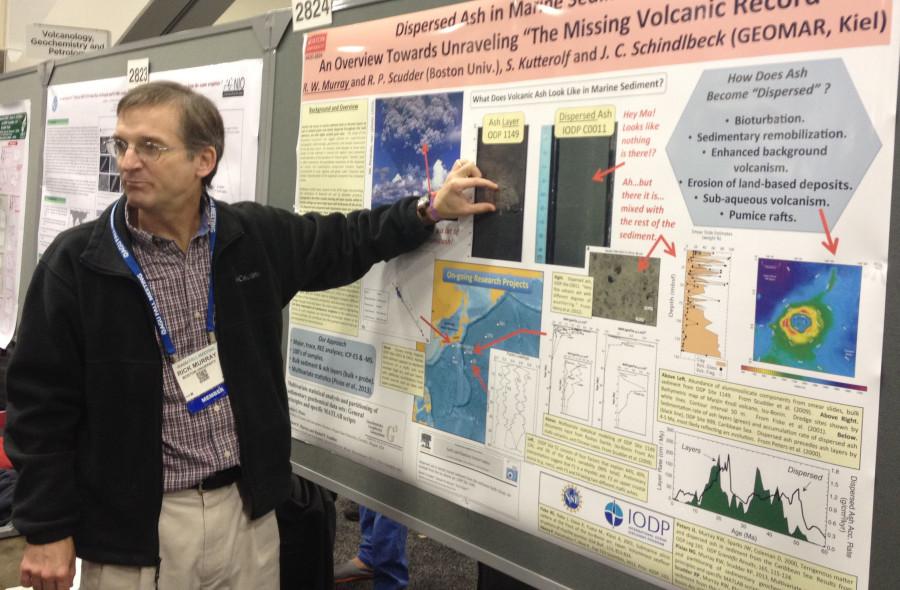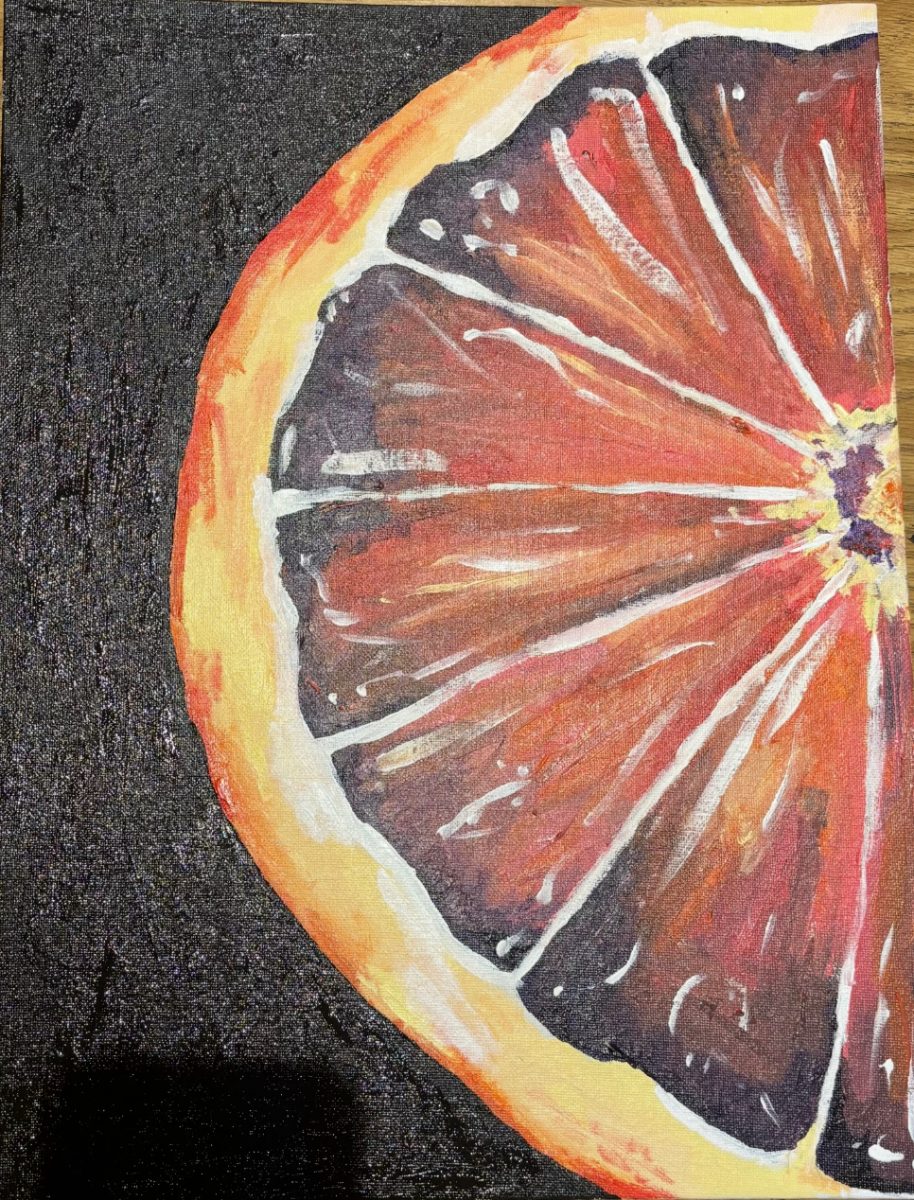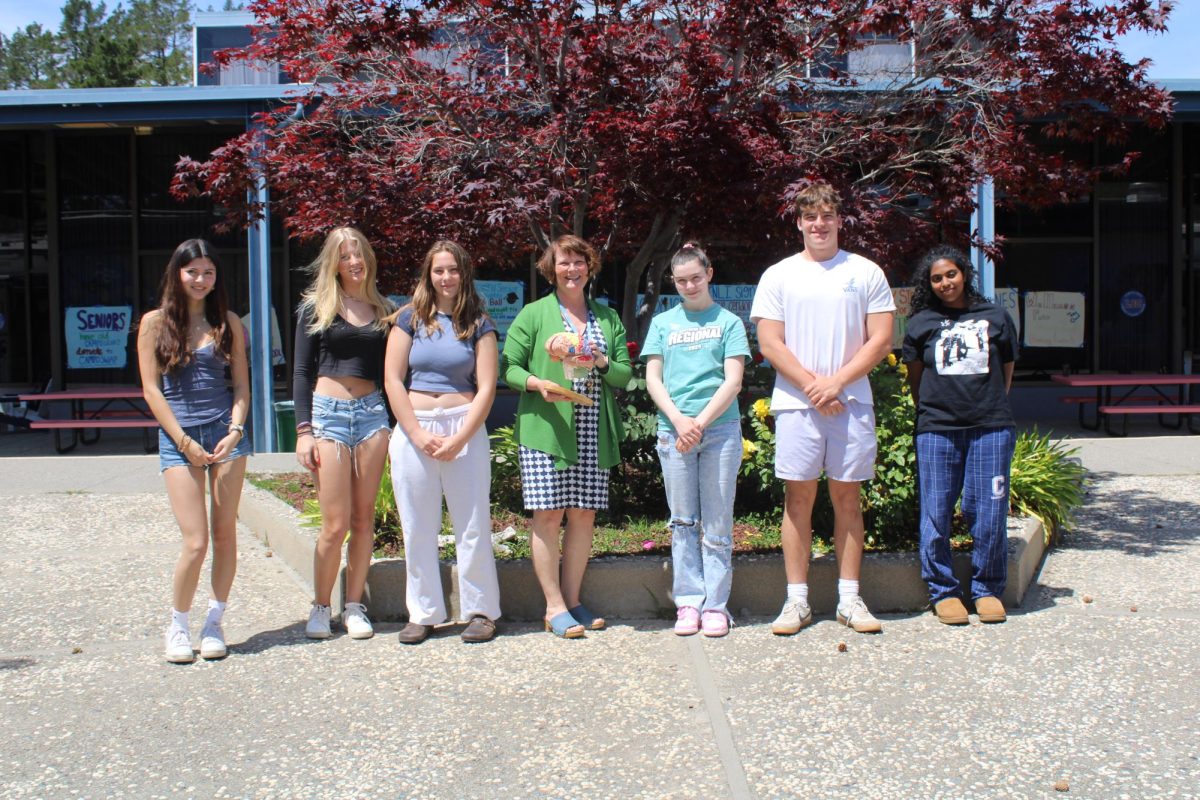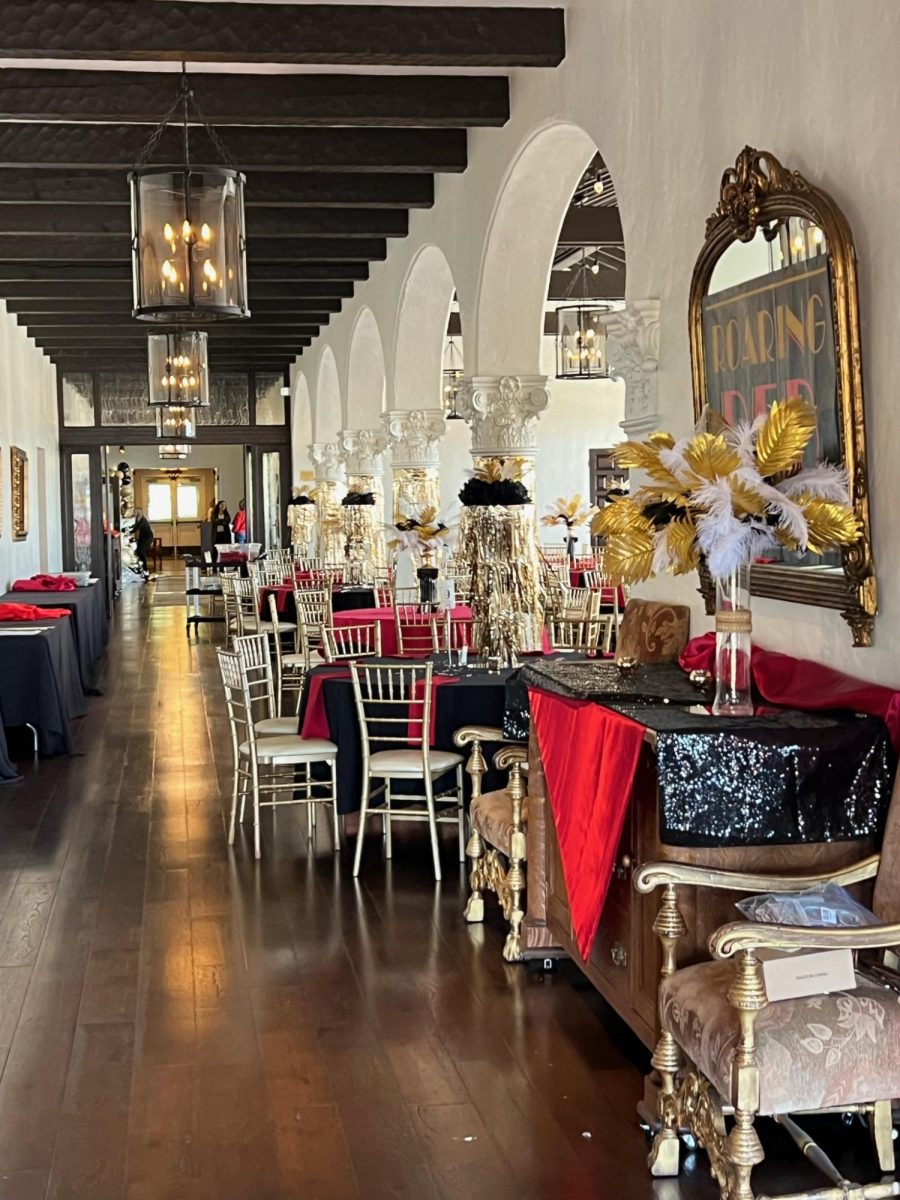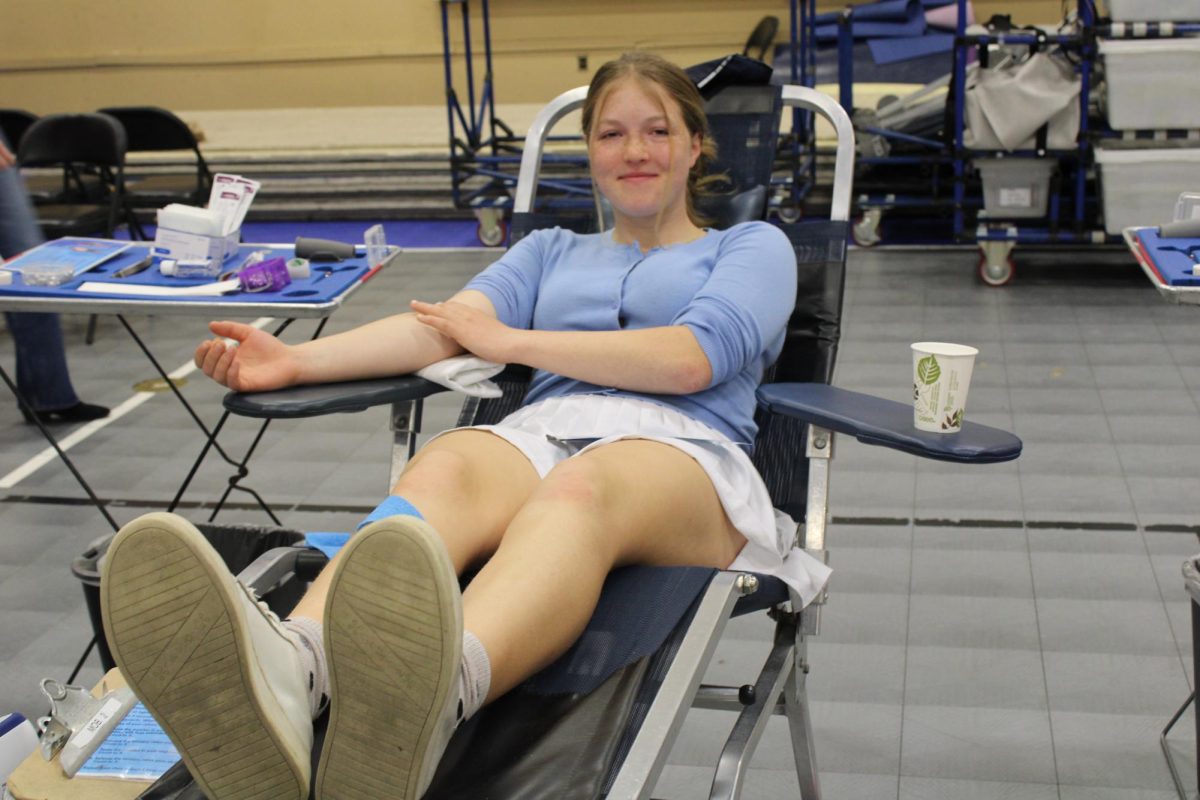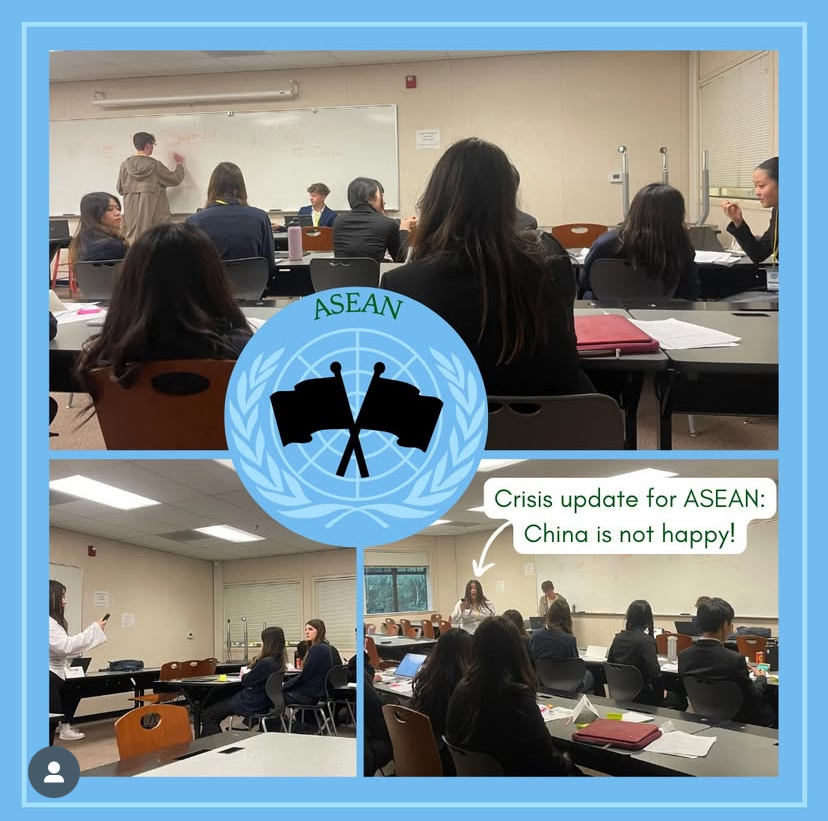On December 12, A.P. Environmental Science (APES) students went to the Moscone Center in San Francisco for the annual Fall American Geophysical Union (AGU) meeting.
According to the AGU official website, the AGU Fall Meeting is the largest worldwide conference in the geophysical sciences. For 46 years, the meeting has attracted Earth and space scientists and educators from all around the world. It is a place where scientists gather “to connect with colleagues, broaden their knowledge base, and embrace the joy of science.”
This year’s meeting was held from Monday, December 9 to Friday, December 13.
Professionals must pay $300 dollars daily to attend, but high school students and teachers were allowed to visit for free.
The Campolindo group first visited Moscone South hall, which held hundreds of posters exhibiting research from scientists throughout the world. Students met with Boston University Professor Rick Murray. Murray explained his poster “Dispersed Ash in Marine Sediment: An Overview Towards Unraveling the ‘Missing Volcanic Sediment.'” He gave an explanation of the poster, describing both his research process and discoveries, before moving on to questions.
Senior Matthew Tuan enjoyed Murray’s presentation. “Listening to the Boston University professor talk about what he does was interesting. It was cool to hear about his job,” he said.
Students perused the Moscone South Exhibit Hall, looking at various posters and talking to professors about their work. “My favorite part of the field trip was when we went to the poster exhibit because I got to talk to some scientists about their experiences,” Senior Sabrina Wong said.
Afterwards, the group went to Town Hall Meetings, AGU events that “offer an opportunity for government agencies, academic programs, special projects, and other interest groups to gather input from the broader AGU community,” according to the official AGU website. For the first meeting, students could chose between “Exploring Careers in Natural Hazards” or “Thriving Earth Exchange Town Hall.” For the second, they chose either “Agricultural Impact on Water Resources” or “Water Resources Management and Policy in a Changing World: Tackling Water Problems Around the Globe.”
Wong felt that the AGU Meeting was a great opportunity because it allowed her to gain a better understanding of science and its applications. “I was able to experience different scientists experiments and learn more about how the earth works,” she said.
Tuan liked that it gave him the ability to explore the many branches of science and learn about science after high school. “I got to learn about different fields of science and many of the job opportunities in the discipline,” he said.
According to Wong, some of the scientists’ research was related to subjects students have been learning about in APES, such as hydrology and volcanology, which helped them apply what they’ve studied in class to the real world.
APES teacher Tren Kauzer thought that the conference was special because it allowed students to engage with high level scientists. He believes that being surrounded by professional scientists, talking with them and asking questions, and reading their research helped students better understand possible career paths in science after graduation. “I wanted students to see and experience what science is like after high school,” he said.
Kauzer also felt that the most powerful aspect of the conference was that it allowed students a peek into the scientific world. “I wanted all of the students to walk away inspired and see how the scientific community interacts. I thought that this was the take-away message,” he explained.
While exploring the halls, Kauzer noticed how much effort the various universities and organizations put into their displays and the detail of the interactions between students and individuals. “As a teacher, it was nice to see that there are organizations creating public outreach materials that are really, really cool and engaging,” he said. “It was inspiring to know that organizations care.”
